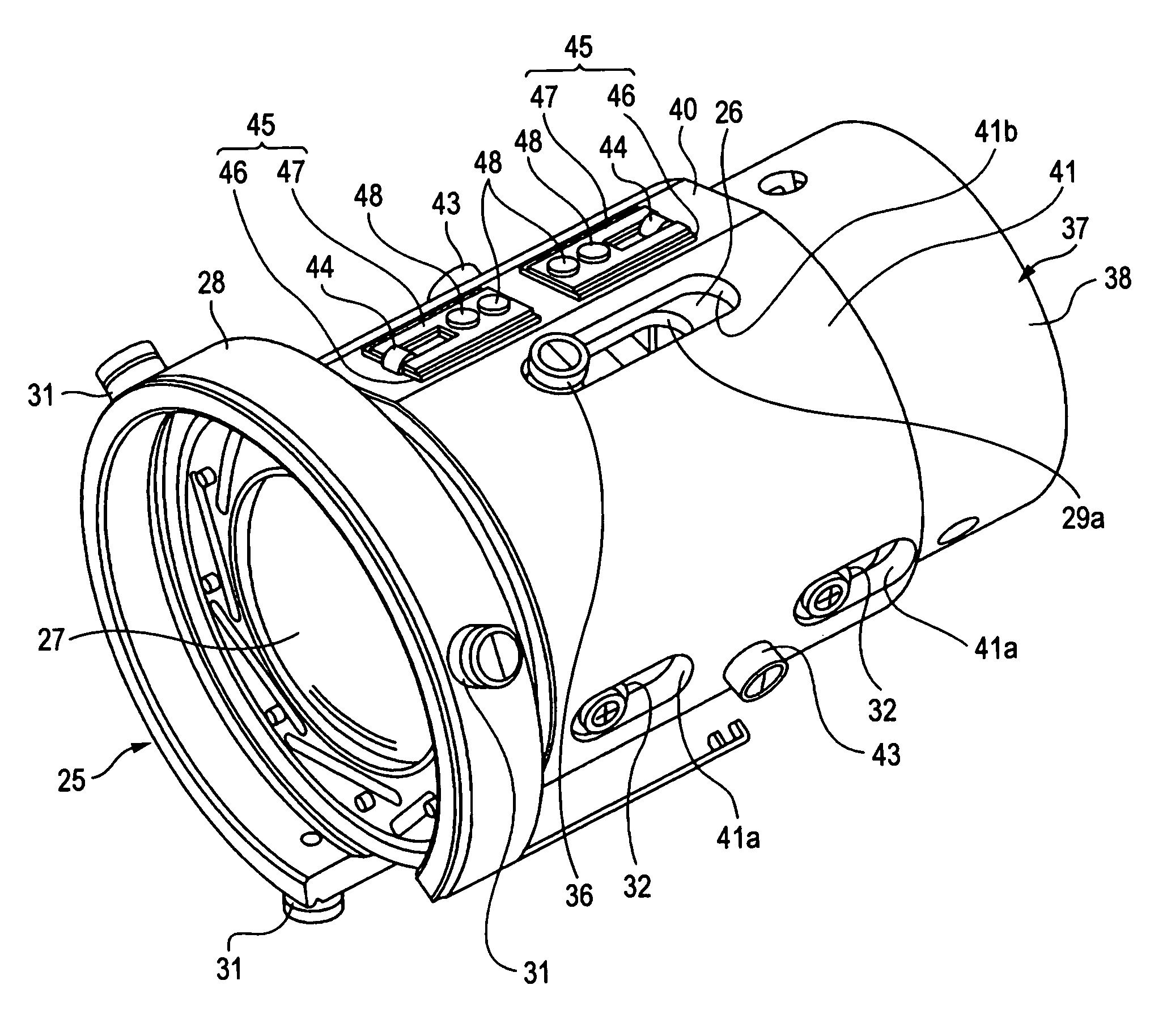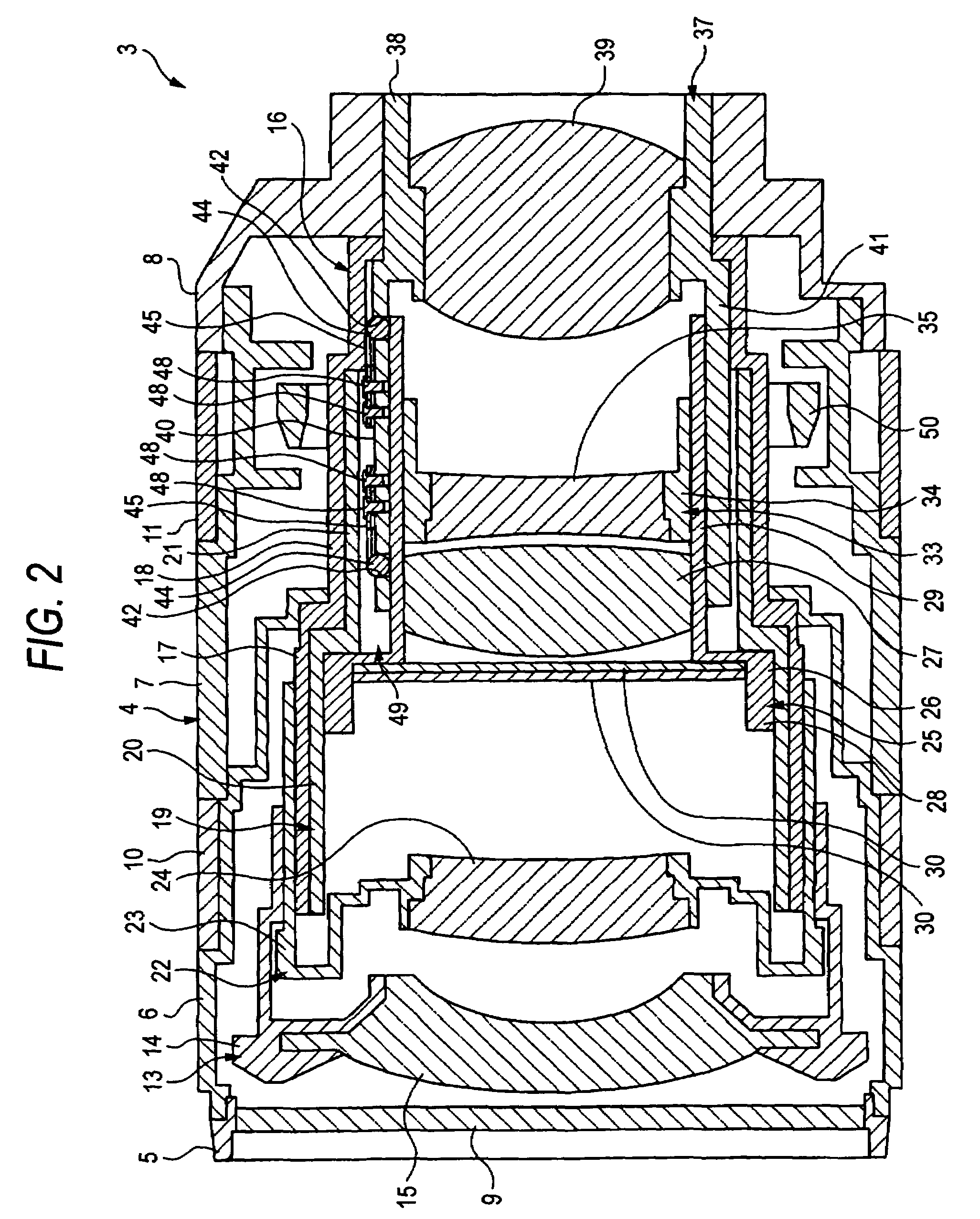Lens barrel and imaging apparatus
a technology of lens barrel and imaging apparatus, which is applied in the direction of mountings, optics, instruments, etc., can solve the problems of large difference inconvenient adjustment of the optical axis of the group of lenses, and inability to move smoothly between the rotating cam barrel and the stationary barrel, etc., to achieve convenient adjustment, small sliding motion, and sufficient space
- Summary
- Abstract
- Description
- Claims
- Application Information
AI Technical Summary
Benefits of technology
Problems solved by technology
Method used
Image
Examples
Embodiment Construction
[0040]The best mode for carrying out a lens barrel and an imaging apparatus according to embodiments of the invention will be described below with reference to the accompanying drawings.
[0041]The best mode described below is an imaging apparatus according to an embodiment of the invention applied to a still camera and a lens barrel according to an embodiment of the invention applied to a lens barrel provided in the still camera. The scope of the invention, however, is not limited to a still camera or a lens barrel provided in the still camera. For example, the best mode is widely applicable to various imaging apparatuses incorporated in a video camera and other apparatuses or a lens barrel provided in such various imaging apparatuses.
[0042]In the following description, the front-rear, up-down, and right-left directions are defined relative to an user who uses a still camera to acquire an image. That is, the subject side is the front side, and the camera user side is the rear side.
[0...
PUM
 Login to View More
Login to View More Abstract
Description
Claims
Application Information
 Login to View More
Login to View More - R&D
- Intellectual Property
- Life Sciences
- Materials
- Tech Scout
- Unparalleled Data Quality
- Higher Quality Content
- 60% Fewer Hallucinations
Browse by: Latest US Patents, China's latest patents, Technical Efficacy Thesaurus, Application Domain, Technology Topic, Popular Technical Reports.
© 2025 PatSnap. All rights reserved.Legal|Privacy policy|Modern Slavery Act Transparency Statement|Sitemap|About US| Contact US: help@patsnap.com



